#Aelbert Cuyp
Explore tagged Tumblr posts
Text

Reclining Dog, Aelbert Cuyp, ca. 1645
#art#art history#Aelbert Cuyp#drawing#chalk#animals in art#dog#dogs#Dutch Golden Age#Baroque#Baroque art#Dutch Baroque#Dutch art#17th century art#Albertina
114 notes
·
View notes
Text

Aelbert Cuyp
21 notes
·
View notes
Text
This may be the first Orpheus Charming the Animals scene I’ve found with a #pangolin in attendance…



Aelbert Cuyp (Dutch, 1620-1691)
Orpheus Charming the Animals, c.1640
Oil on canvas, 113 x 167cm (44 1/2 x 65 3/4in.)
On display at Museum of Fine Arts, Boston
“The ancient Roman poet Ovid recounts how Orpheus, a legendary Greek musician, pacified wild animals with his soothing music. Here Cuyp places Orpheus in a typical Dutch landscape, populated with native species such as bulls, goats, and cats. But Cuyp adds American, Asian, and African creatures, too, including jaguars, a camel, an elephant, and an ostrich. Cuyp probably saw many of these species in person, but he almost certainly studied pictures of them in prints and books as well. His menagerie reflects the explosion of scientific knowledge that came with overseas trade and colonial ventures. The picture is, at the same time, an illustration of a Classical story, a landscape, and an animal painting. But it also makes a political statement, drawing a parallel between Orpheus's power over the animals and the Dutch Republic's dominance of the globe.”
#animals in art#european art#birds in art#museum visit#painting#oil painting#Dutch art#17th century art#Orpheus charming the animals#Greek mythology#Orpheus#pangolin#Museum of Fine Arts Boston#Aelbert Cuyp
37 notes
·
View notes
Text
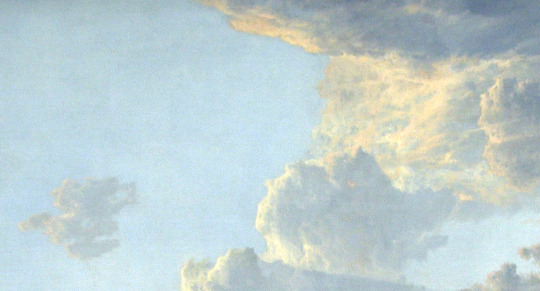
Aelbert Cuyp (Dutch, 1620–1691) detail of The Maas at Dordrecht (c. 1650) oil, 114.9 × 170.2 cm
83 notes
·
View notes
Text

Aelbert Cuyp, Young Herdsman with Cows, ca. 1655-1660, oil/canvas (Metropolitan Museum of Art, New York)
16 notes
·
View notes
Text

Aelbert Cuyp - A View of Vianen with a Herdsman and Cattle by a River
15 notes
·
View notes
Text

Aelbert Cuyp (Dutch, 1620-1691)
Young Herdsmen with Cows
6 notes
·
View notes
Text

3 notes
·
View notes
Text

Aelbert Cuyp (Dutch, 1620-1691) The Valkhof at Nijmegen, ca.1653 Newfields
#Aelbert Cuyp#The Valkhof at Nijmegen#1600s#art#dutch#netherlands#netherlandish#fine art#european art#classical art#europe#european#oil painting#fine arts#mediterranean#europa#landscape painting#landscape#european landscape#dutch art
16 notes
·
View notes
Text
PORTRAITS DE PEINTRES (Proust, Les plaisirs et les jours, 1896)
Albert Cuyp
"Cuyp, soleil déclinant dissous, dans l'air limpide
Qu'un vol de ramiers gris trouble comme de l'eau,
Moiteur d'or, nimbe au front d'un bœuf ou d'un bouleau,
Encens bleu des beaux jours fumant sur le coteau,
Ou marais de clarté stagnant dans le ciel vide.
Des cavaliers sont prêts, plume rose au chapeau,
Paume au côté ; l'air vif qui fait rose leur peau,
Enfle légèrement leurs fines boucles blondes,
Et, tentés par les champs ardents, les fraîches ondes,
Sans troubler par leur trot les bœufs dont le troupeau
Rêve dans un brouillard d'or pâle et de repos,
Ils partent respirer ces minutes profondes."

Albert Cuyp, Pieter de Roovere, seigneur de Hardinxveld, ca. 1650, h/t, La Haye, Mauritshuis.
Paulus Potter
"Sombre chagrin des ciels uniformément gris,
Plus tristes d'être bleus aux rares éclaircies,
Et qui laissent alors sur les plaines transies
Filtrer les tièdes pleurs d'un soleil incompris;
Potter, mélancolique humeur des plaines sombres
Qui s'étendent sans fin, sans joie et sans couleur,
Les arbres, le hameau ne répandent pas d'ombres,
Les maigres jardinets ne portent pas de fleur.
Un laboureur tirant des seaux rentre, et, chétive,
Sa jument résignée, inquiète et rêvant,
Anxieuse, dressant sa cervelle pensive,
Hume d'un souffle court le souffle fort du vent."

Paulus Potter, Le Cheval Pie, 1652, h/t, Los Angeles, J. Paul Getty Museum.
Antoine Watteau,
"Crépuscule grimant les arbres et les faces,
Avec son manteau bleu, sous son masque incertain;
Poussière de baisers autour des bouches lasses...
Le vague devient tendre, et le tout près, lointain.
La mascarade, autre lointain mélancolique,
Fait le geste d'aimer plus faux, triste et charmant.
Caprice de poète — ou prudence d'amant,
L'amour ayant besoin d'être orné savamment —
Voici barques, goûters, silences et musique."

Antoine Watteau, Les plaisirs de l'amour, ca. 1718-1719, h/t, Dresde, Staatliche Kunstsammlungen.
Antoine van Dyck,
"Douce fierté des cœurs, grâce noble des choses
Qui brillent dans les yeux, les velours et les bois,
Beau langage élevé du maintien et des poses
— Héréditaire orgueil des femmes et des rois ! —
Tu triomphes, Van Dyck, prince des gestes calmes,
Dans tous les êtres beaux qui vont bientôt mourir,
Dans toute belle main qui sait encor s'ouvrir;
Sans s'en douter, — qu'importe ? — elle te tend les palmes !
Halte de cavaliers, sous les pins, près des flots
Calmes comme eux — comme eux bien proches des sanglots —
Enfants royaux déjà magnifiques et graves,
Vêtements résignés, chapeaux à plumes braves,
Et bijoux en qui pleure — onde à travers les flammes —
L'amertume des pleurs dont sont pleines les âmes
Trop hautaines pour les laisser monter aux yeux;
Et toi par-dessus tous, promeneur précieux,
En chemise bleu pâle, une main à la hanche,
Dans l'autre un fruit feuillu détaché de la branche,
Je rêve sans comprendre à ton geste et tes yeux :
Debout, mais reposé, dans cet obscur asile,
Duc de Richmond, ô jeune sage ! — ou charmant fou ? —
Je te reviens toujours : Un saphir, à ton cou,
A des feux aussi doux que ton regard tranquille."

Antoine van Dyck, Charles Ier à la chasse, 1635, h/t, Paris, Louvre.
#marcel proust#aelbert cuyp#paulus potter#antoine watteau#antoine van dyck#art#artwork#painting#literature
0 notes
Link
Aelbert Cuyp, jeden z najzdolniejszych malarzy holenderskiego Złotego Wieku, w swoim dziele "Maas w Dordrecht" z 1650 roku ukazuje mistrzostwo w przedstawianiu naturalnego światła i przestrzeni. Sceneria tej rzecyświetlna ukazuje spokój bijący od wód rzeki Maas, a złota poświata na niebie i delikatne chmury w tle tworzą atmosferę pełną harmonii i równowagi. Cuyp, znany z fascynacji pejzażami i scenami wiejskimi, w tej pracy doskonale połączył wpływy szkoły Caravaggia z lokalną tradycją holenderską. Jego zdolność do przedstawiania natury tak realistycznie, a zarazem romantycznie, uczyniła z tego obrazu jedno z jego najbardziej uznanych dzieł.
0 notes
Video
Aelbert Cuyp, Fishing under the Ice on the Maas, mid-1650s, Oil on panel, 11/21/23 #legionofhonor by Sharon Mollerus
#fine art#mid-1650s#Legion of Honor Museum#11/21/23 legionofhonor#Fishing under the Ice on the Maas#Oil on panel#Aelbert Cuyp#San Francisco#CA#flickr
0 notes
Text

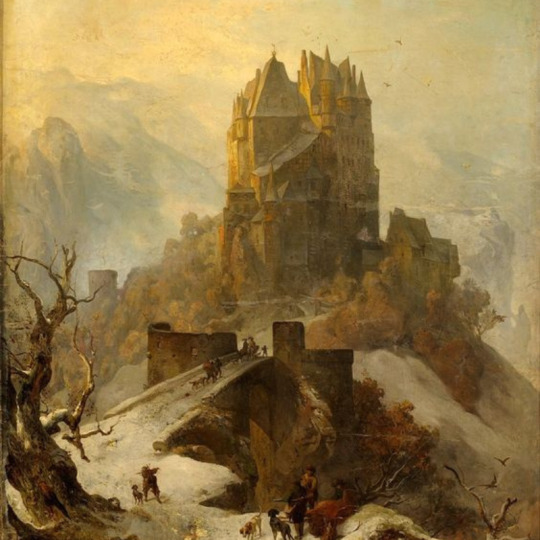
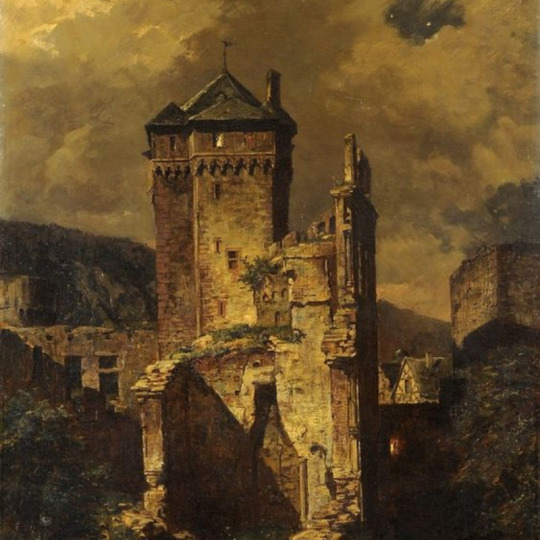
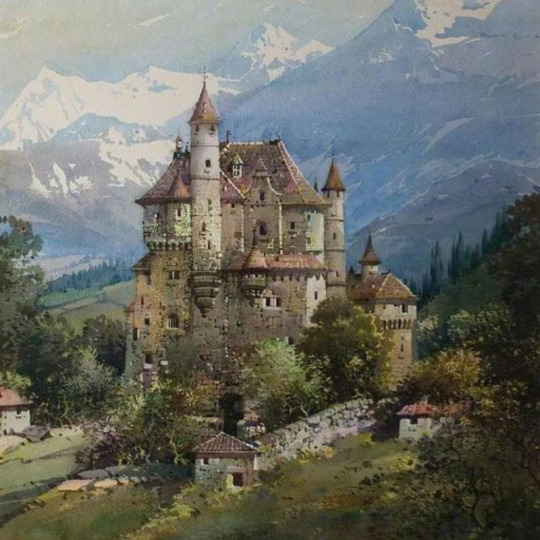
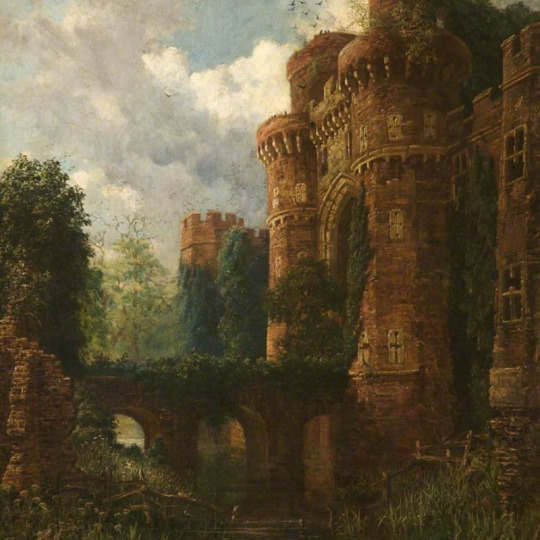

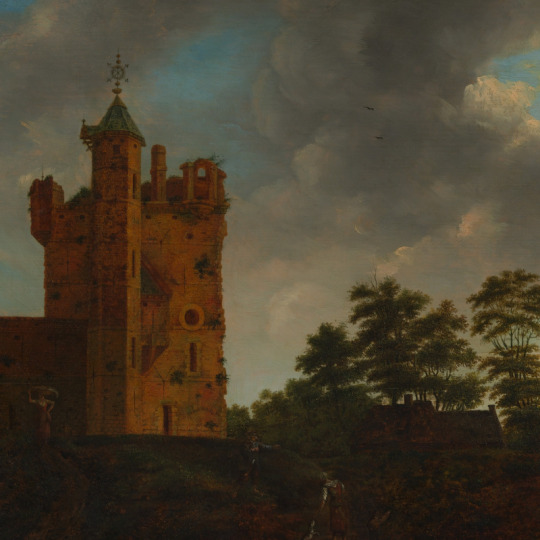
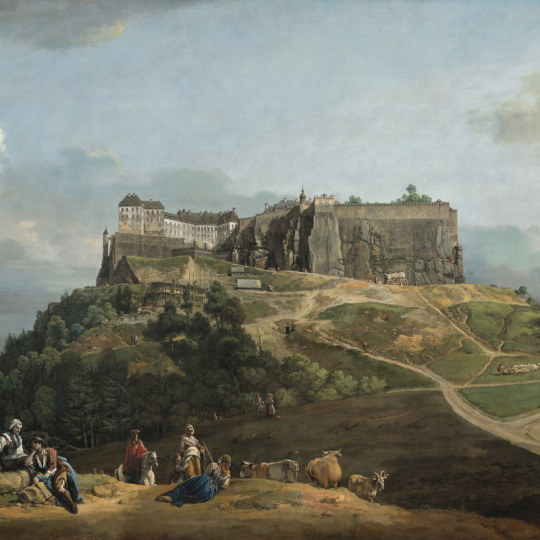

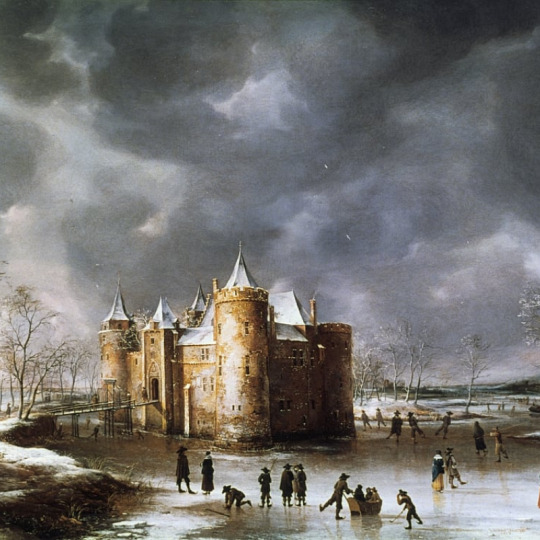
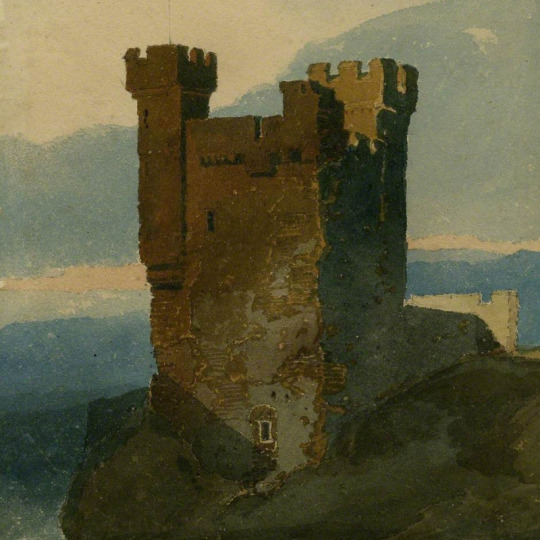
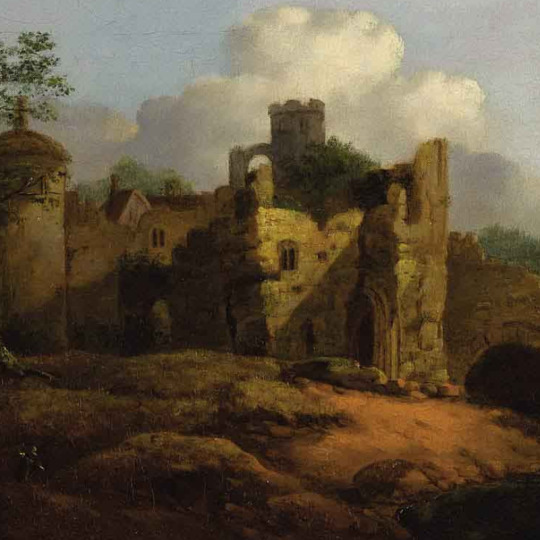

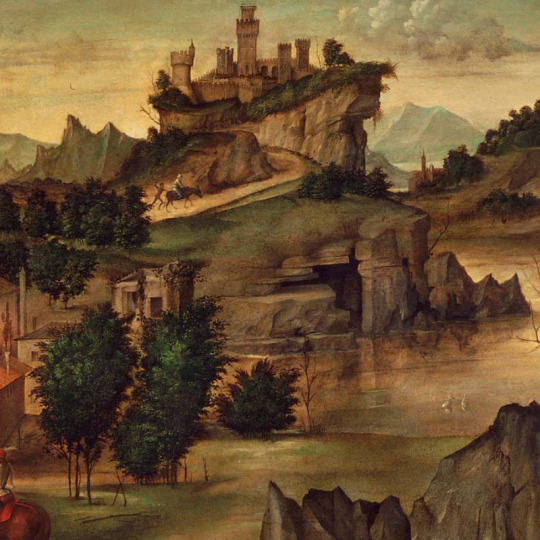
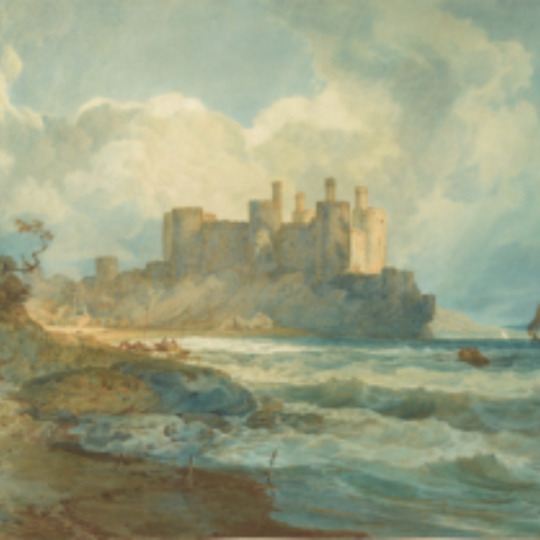
castles + art
#artist is henrich adolf valentin hoffmann#artist is carl hilgers#artist if fritz von wille#dont know artist but the painting is of neuschwanstein castle#artist is rayner samuel#cant find artist#artist is emanuel murant#artist is bernardo bellotto#artist is aelbert cuyp#artist is jan beerstraaten#artist is thomas gainsborough#artist is henrick averkamp#artist is barolomeo montagna#artist is jmw turner#art history#castles#art
2K notes
·
View notes
Text
El mundo es mio

Aelbert Cuyp (Dordrecht, Holanda Meridional, 1620-1691) Mercurio h. 1650-1660 óleo sobre cobre 70,4 x 42,3 cm Nº inv. 449 Colección BBVA España
Aelbert Cuyp, destacado artista del siglo XVII en los Países Bajos, fue célebre por sus retratos de grupo al aire libre y sus paisajes de carácter idílico, reflejo de la Arcadia holandesa. Asimismo, durante la década de 1650, realizó escenas mitológicas ambientadas en naturalezas pintorescas, obras, como la presente, de clara influencia italiana.
La pieza, una alegoría del comercio, actividad fundamental en la vida holandesa de los siglos XVI y XVII, representa a Mercurio, dios del comercio y del mercado, a la vez que mensajero de los dioses y patrón de los viajeros. Cuyp recurre a la mitología tradicional, pero introduce algunas variantes. Muestra a un joven desnudo con sandalias en los pies (no aladas, como era habitual); el efebo helénico ha sido sustituido por un muchacho de rasgos neerlandeses, de cuerpo más robusto y carnoso que el modelo clásico; en la cabeza, el característico sombrero alado; completan su imagen el usual caduceo y un paquete de cartas –signo de su condición de mensajero− en una mano y, en la otra, las consabidas bolsas con monedas. Mercurio está de pie sobre la bola del mundo, junto a la que aparecen diseminados una serie de objetos −un cuaderno de notas, plumas, tinteros, sellos y pesas− que subrayan su valor alegórico.
Al plasmar la figura mitológica que protagoniza el cuadro se atiene en esencia a las convenciones del género; es sobre todo en el resto donde quedan patentes su gran sensibilidad plástica y las características propias de su estilo en la segunda mitad de la década de 1640. La introducción de vistas de montañas y la tenue iluminación dorada responden a un nuevo concepto de paisaje, importado de Italia por pintores que habían viajado a ese país. Utiliza también otro de los recursos habituales del momento: aplica una tonalidad más oscura en los primeros planos, que, al generar contraste con los colores suaves y claros del fondo, acentúa la perspectiva. La calidez cromática y la armonía de luces y sombras producen una sensación de serenidad que parece dejar la escena suspendida en un tiempo indefinido. Es probable que esta obra sea la que aparece en un documento de venta a nombre de Johan van der Linden van Slingelandt, de 1785, junto a otra considerada un san Sebastián –aunque, según A. P. Mirimonde, debía tratarse en realidad de un Apolo, utilizado como alegoría en honor de Henri-Gaston de Bourbon, obispo de Metz, príncipe del Sacro Imperio y marqués de Verneuil−. Se supone que ambas pinturas, realizadas sobre cobre y separadas en dicha venta, eran las puertas de un pequeño armario para guardar monedas, algo habitual en la época. Más de un siglo después, en 1908, Cornelis Hofstede de Groot la recoge en su catálogo razonado de pintores holandeses. Se cree que, tras esta información, pasó por el mercado alemán y por diversas colecciones, siendo vendida en subasta en Lucerna en noviembre de 1953 y posteriormente adquirida por el Banco Exterior de España, cuyos fondos conforman una parte importante de la actual Colección BBVA.
Información e imágenes de la web de la Colección BBVA.
3 notes
·
View notes
Text

Aelbert Cuyp - A cockerel and three hens in a landscape a fragment
6 notes
·
View notes
Text
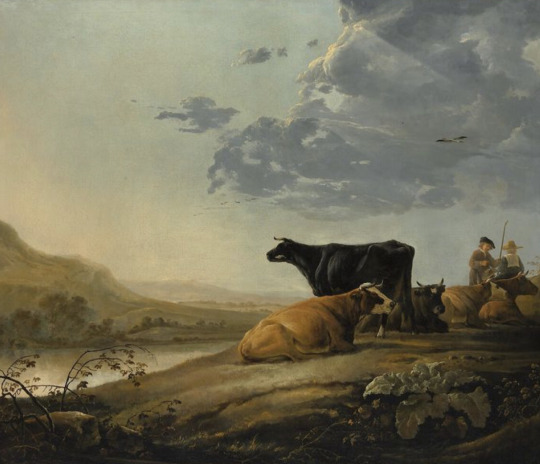
Aelbert Cuyp (Dutch, 1620–1691)
Young Herdsmen with Cows
1 note
·
View note